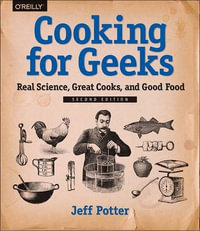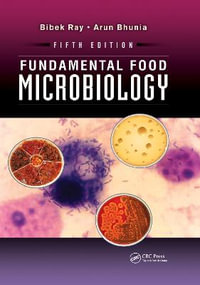
Analytical Methods for Milk and Milk Products
3-volume set
By: Megh R. Goyal (Editor), Santosh K. Mishra (Editor), N. Veena (Editor)
Multi-Item Pack | 19 February 2024
At a Glance
Multi-Item Pack
RRP $914.00
$759.80
17%OFF
Available for Backorder. We will order this from our supplier however there isn't a current ETA.
This new three-volume set comprehensively illustrates a wide range of analytical techniques and methodologies for assessing the physical, chemical, and microbiological properties of milk and milk products to ensure nutritional and technological quality and safety of milk and milk products.
Volume 1: Sampling Methods and Chemical and Compositional Analysis covers analysis of milk and milk products with a description of the main analytical techniques and methodologies and their application to the compounds involved in nutritional and technological quality. The volume first describes sampling methods and chemical analysis of milk, highlighting the standard methods used for calibration of different glassware, sampling procedures of milk and milk products, and the physicochemical and compositional aspects and assessment of the quality of raw milk intended for processing and manufacturing. The book describes the compositional analysis of frozen and fat-rich products, including the physicochemical and compositional analysis of dairy products that include cream, butter, butter oil, clarified fat (ghee), ice cream, and frozen desserts. Each of the laboratory exercises includes an introduction, objective, principle of method, chemicals and apparatus required, sample preparation, experimentation, data collection sheet and calculations, and resource materials.
Volume 2: Physicochemical Analysis of Concentrated, Coagulated, and Fermented Products focuses on various analytical methods for physicochemical and compositional analysis of concentrated, coagulated, and fermented dairy products in detail. It also describes the standard methodologies for the analysis of nutraceutical components and food additives commonly used in various dairy products to meet technological and nutritional quality standards.
The first section looks at physicochemical analysis of concentrated milk products, highlighting the different standard methods for physicochemical analysis of condensed and evaporated milk, milk powder and infant milk formula, and khoa and khoa-based sweets. The volume then discusses physicochemical analysis of fermented and coagulated products; it deals with physicochemical and compositional analysis of different dairy products including paneer and channa, cheese and cheese spreads, casein, caseinates, whey powder, and fermented milk products. The last section explains the analysis of food additives and nutraceuticals in dairy products, describing the standard methodologies for the analysis of nutraceutical components and food additives commonly used in various dairy products to meet the technological quality.
Volume 3: Microbiological Analysis, Isolation, and Characterization focuses on the various aspects of bacterial enumeration, pathogen detection, mastitis milk identification, quality testing for starter cultures, isolation and characterization of lactic acid bacteria (LAB), safety assessment protocols for probiotics, DNA isolation methods, molecular characterization techniques, and statistical tools for laboratory data analysis. It presents an in-depth description of the methodologies for isolation, identification, and confirmatory tests for various hygiene and safety indicator organisms.
Together, this 3-volume work will be a valuable resource that has been carefully organized to cater to the needs of students, researchers, scientists, food analysts, and professionals working in food analysis or research laboratories, particularly those involved in milk and milk products analysis.
ISBN: 9781774913055
ISBN-10: 1774913054
Series: Analytical Methods for Milk and Milk Products
Published: 19th February 2024
Format: Multi-Item Pack
Language: English
Number of Pages: 1114
Audience: Professional and Scholarly
Publisher: Apple Academic Press Inc.
Country of Publication: GB
Dimensions (cm): 23.4 x 15.6
Weight (kg): 0.45
Shipping
| Standard Shipping | Express Shipping | |
|---|---|---|
| Metro postcodes: | $9.99 | $14.95 |
| Regional postcodes: | $9.99 | $14.95 |
| Rural postcodes: | $9.99 | $14.95 |
How to return your order
At Booktopia, we offer hassle-free returns in accordance with our returns policy. If you wish to return an item, please get in touch with Booktopia Customer Care.
Additional postage charges may be applicable.
Defective items
If there is a problem with any of the items received for your order then the Booktopia Customer Care team is ready to assist you.
For more info please visit our Help Centre.
























